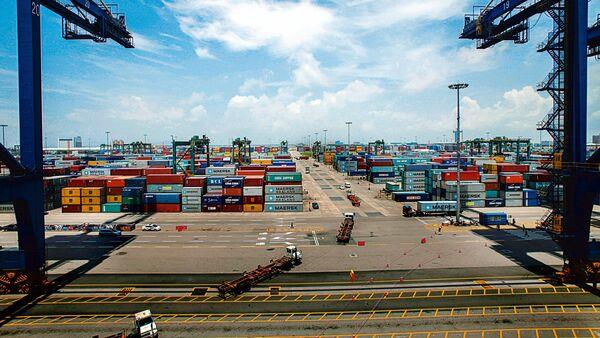
India Pitches For Significant Duty Reduction On Agri Products, Chemicals, And Petrochemicals With South Korea
India wants tariff cuts in agricultural products, textile & apparel, pharmaceuticals, electronics and petrochemicals goods, among others, while South Korea has demanded better mobility access for its professionals, two people aware of the development said.
The Indian team led by the commerce ministry's additional secretary Anant Swarup is negotiating the Comprehensive Economic Partnership Agreement (CEPA) in Seoul.
Facilitating tradeSouth Korea and India signed the CEPA in Seoul in 2009 to increase economic exchange and facilitate trade between the countries.
The agreement, negotiated over 12 rounds and for over three years, came into effect in 2010. It is now being reviewed for the first time from17 to 19 July.
India has also demanded greater market access for some of its products like steel, rice, and shrimp, said the first person mentioned above.
“Indian exporters face various non-tariff barriers in South Korea, including stringent standards, regulations, and certification requirements. These barriers make it difficult for Indian goods to penetrate the South Korean market,” the person said.
“There are challenges related to gaining better market access for Indian agricultural products like shrimp, rice, steel, pharmaceuticals, and services in South Korea. Indian businesses seek more favourable terms to compete effectively in these sectors,” this person said.
Import quotaSouth Korea has established an import quota of 500,000 tonnes for rice. Out of this, a quota of 480,000 tonnes was allocated to five countries, including China, Australia, the US, Thailand, and Vietnam. All other countries combined share a quota of only 20,000 tonnes.
"They have put India into the 'others' category. We are requesting to include India in the country-specific category or increase our quota," said the second person mentioned above.
"South Korea imposes an import duty of 513% on rice. Also, there is a 5% import duty on shrimp," the person added.
Indian agricultural produce, vegetables, and spices face higher tariffs and strict sanitary and phytosanitary standards, impacting market penetration.
Meanwhile, Indian exports to South Korea, like automobiles, auto components, pharmaceuticals, textiles & apparel, are affected by higher tariffs compared to tariffs imposed on South Korean textiles entering India.
Similarly, Indian electronics and electrical equipment manufacturers face competitive disadvantages due to higher tariffs and the advanced technological standards required by the South Korean market.
Spokespersons of the commerce ministry and the South Korean government didn't respond to emailed queries.
In deficitIndia's key trading partners in Asia include the ASEAN, Japan and South Korea. However, India's trade balance with all these countries/regions is in deficit, with imports exceeding exports.
Mint
had on 17 April reported that India's 2011 free trade deal (FTA) with Japan is likely to be reviewed in the coming months, with New Delhi keen to minimize the trade deficit with Tokyo.
"India's key FTAs with ASEAN, South Korea, and Japan have shown a significant increase in trade deficits and a lower growth rate in exports compared to imports," economic thinktank Global Trade Research Initiative (GTRI) said in a recent report.
"The analysis of India's three key Free Trade Agreements (FTAs) with ASEAN, South Korea, and Japan, signed in 2010-2011, reveals two main trends in trade performance. First, India's merchandise trade deficit with these partners increased significantly more than its global trade deficit...Second, India's exports to these FTA partners have increased at a lower rate than its imports," it added.
During FY24, India's exports to South Korea stood at $6.42 billion, in value term, down 3.57% annually, while imports from the Southeast Asian country stood at $21.14 billion, down 0.43% annually.
The trade deficit stood at $14.72 billion during FY24.
The CEPA agreement covers trade in goods, investments, services, and bilateral cooperation in areas of common interest.
“The CEPA aimed to increase economic exchange and facilitate trade between the two countries,” said Ajay Srivastava, founder of the Global Trade Research Initiative (GTRI).
“However, in the past 14 years of existence of the CEPA, India's trade deficit with S. Korea has steadily increased. Also, Indian firms faced many issues related to market access and non-tariff barriers,” he added. Legal Disclaimer:
MENAFN provides the
information “as is” without warranty of any kind. We do not accept
any responsibility or liability for the accuracy, content, images,
videos, licenses, completeness, legality, or reliability of the information
contained in this article. If you have any complaints or copyright
issues related to this article, kindly contact the provider above.


















Comments
No comment